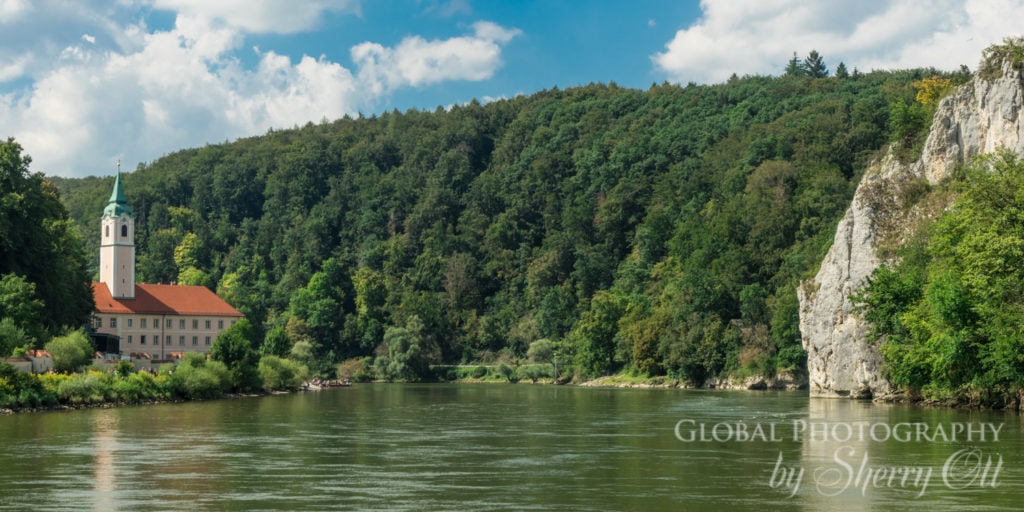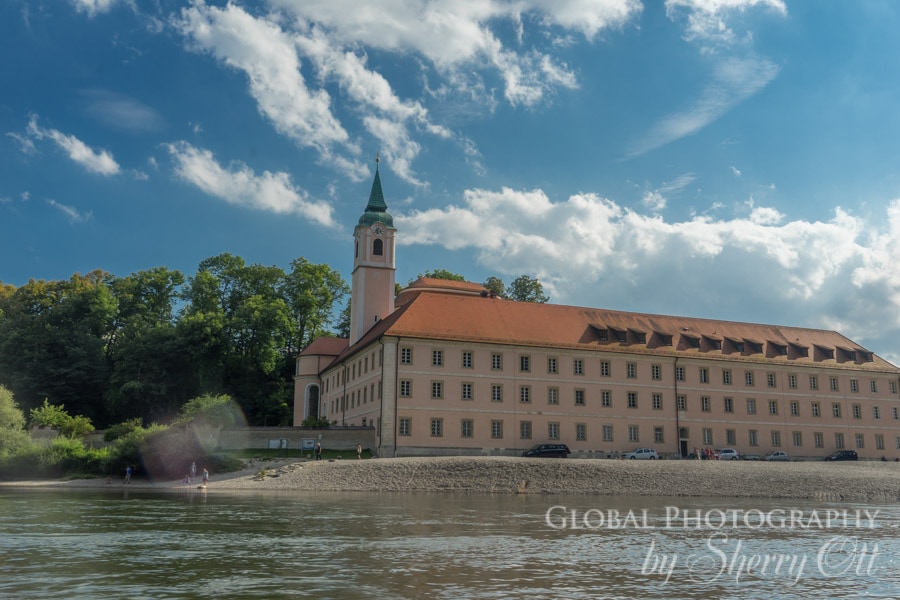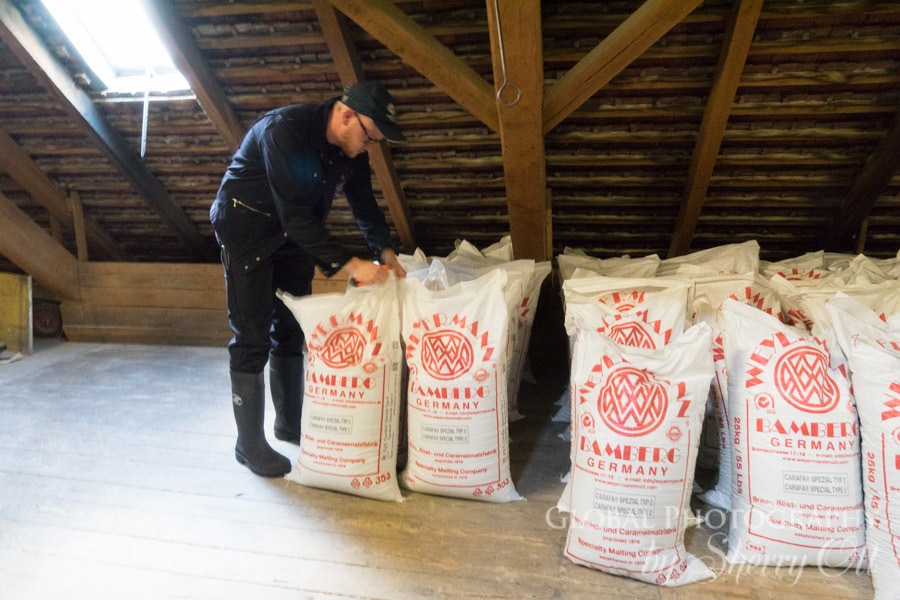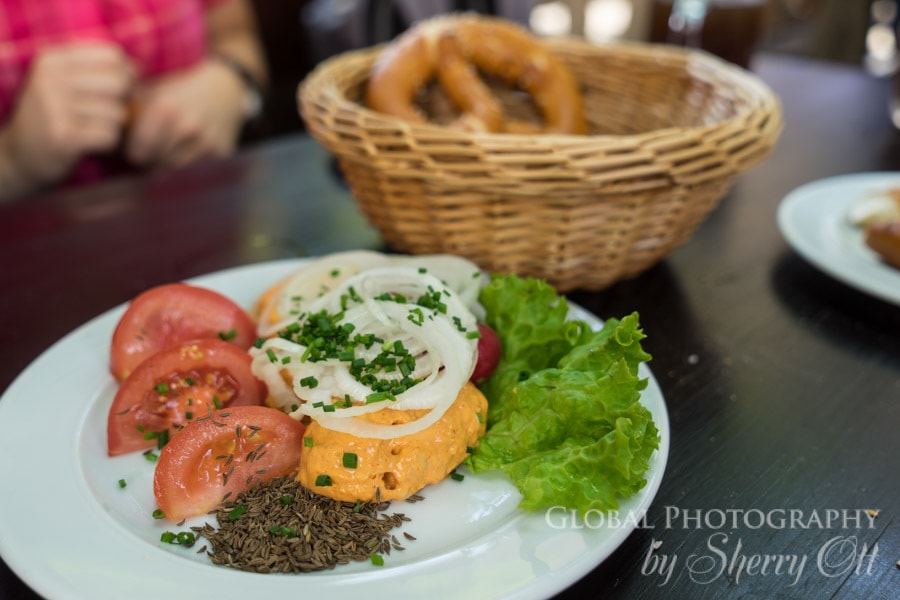Remember the scene in Willy Wonka where they were introduced to the Chocolate River? It was a kid’s wildest sugary, chocolate dreams come true. That’s sort of how I felt about the Young Danube River and the number of breweries along it – it was sort of like a river of beer; an adult’s wildest dreams come true!
As I traveled the Young Danube River from Donaueshingen to Regensburg there seemed to be breweries everywhere. Every region had a number of small breweries that served each local area. There are said to be approximately 1,350 breweries in Germany with half of them calling Bavaria home. This shouldn’t really surprise anyone considering in Germany they are serious about their beer. In fact, they even have a word for it in the German language, bierernst, which means “deadly serious” and translates literally as “beer serious.”
Table of Contents
To Beer or Not to Beer
In fact, the serious nature of Germany’s Beer is highlighted by the German Beer Purity Law, Reinheitsgebot (what a great Scrabble word!), which turned 500 years old this year. This law actually started in Bavaria in 1516 by two Dukes, stating that only 3 ingredients – water, hops, and barley – could be used in beer. In fact, if said beer had other variations of ingredients, then the word “beer/bier” couldn’t be used.
You might think that this law was put in place to have some quality control on the industry and food safety – but it really had little to do with that. The law’s purpose was more about ‘global trade’ and protecting the local brewers from competition from the outside as well as protecting the bakers who were also buying up wheat and rye for bread making. Restricting the brewers to barley only, protected the bakers – ensuring the price of bread remained low. Based on my observations, the only thing more important than beer in Germany is probably bread. If you’ve had breakfast in Germany then you know what I mean.

In the mid 1500’s Bavaria lightened the restrictions a bit and allowed other grains to be used. Yeast was also added to the law as the 4th ingredient once they discovered its role in fermentation. In 1905, Germany adopted the original Bavarian law in order to stop or slow the importing of British Beer. Under the law, the British drink couldn’t be called beer in Germany as it violated the law by using alternate ingredients. So in essence, you can think of the Beer Purity Law as a big ‘wall’ keeping competition out. The amazing thing is that the law is still in place today – for better or for worse.
When I travel, I find the cheapest rental car rates at RentalCars.com. Check out their prices for a German road trip!
Does the German Beer Purity Law Hold Brewers Back?
I just attended the Great American Beer Festival in Denver last weekend where I drank things that had passion fruit, sea salt, and even a peanut butter chocolate beer. I had sours, lambics, and beers that had smoke flavoring – things that would never pass the German purity law. These ingredients used to flavor beer are forbidden under the Reinheitsgebot. But then again Americans love to push the boundaries.
As I met brewers in Bavaria along the Danube, I asked them if they felt restricted by the law considering the new boom of craft brewing around the world. None of them seemed bothered by it at all, noting that even though they are restricted to 4 ingredients, there is a lot of variation in the ingredients. In fact, many noted that it has really pushed them to develop different flavors from the original ingredients instead of taking the ‘easy’ way and just adding more stuff.
Plus, the Germans have taken an American tactic, and have figured out how to use the Purity Law for marketing and branding; making German beer even more desirable.

I learned that hops are now grown with various flavor variations like citrus, various types of malts/cereals can be used, and top vs. bottom fermentation also yields different flavor profiles. The German Brewers Association agrees that monotony isn’t a concern. “The law allows the use of 100 kinds of hops, 40 malts, and 200 yeast strains. Drinkers can enjoy a different kind of beer brewed under the law every day for 15 years without duplication.”
These conversations reminded me just how much Germans love rules. I doubt a purity law would work in the US. However, as I tasted the various brews along the Danube in Bavaria, I was surprised and impressed by just how different the flavors and techniques were from brewer to brewer.
Take a Beer Tour Along the Young Danube in Bavaria
I visited 5 breweries along or near the Danube in Bavaria and each one had something that made them unique. However, they all still followed the 4 ingredients law; it was interesting to see how they combined tradition and creativity into those 4 ingredients.
Whether you bike or drive, stop at these 5 breweries to get a taste of the best Bavarian beer along the Danube!
1. Berg Brewery in Ehingen Keeping it in the Family
Operating locally since 1466, this brewery is older than the Beer Purity law! And since 1757 it’s been family owned when they bought it from the Empress of Austria because she needed money for the 7 Year War. I met Franz who took me on a tour of the Berg Brewery in Ehingen along the Danube.
To my surprise, I learned that Berg only distributes their 14 beers within 50 miles of the brewery. For 550 years, they’ve only operated hyper-local. Franz explained that the German market isn’t really dominated by one or two big players like in the States. The Uli, or Ulrich Beer, is probably their most loved out of their lineup. A delicious brown beer from wooden barrels and a hop top; this beer has quite a history to it.




How You Can Drink Berg Beer
Berg Brewery offers tours, and one-day workshops, and has a great beer garden, museum, and restaurant offering local Swabian food specialties like ravioli!
More info: Berg Bier
See my interview with Franz
2. Riedenburger Brewhouse Organic Brewing
The Beer Purity law says you can only use malts, hops, water, and yeast – however, it doesn’t indicate the quality or condition of these items. However, Riedenburger has set its own standard of ingredients by being the first brewery in Bavaria to go completely organic in 1994. I’m not sure that the word ‘organic’ had even entered my vocabulary by 1994, this brewery really was ahead of its time. They were originally known for their wheat beers, but now they are best known for their use of ancient grains like inkorn, emmer, and spelt – all of which still qualify as malt under the purity law.

I met with Max, the son who has now taken over the family business lasting 8 generations. Max learned about brewing in Italy and his young take on the business has also allowed him to form partnerships with Brooklyn Brewery; they created a beer together a few years ago. In addition to the use of local, organic ingredients and ancient grains, they also set themselves apart by offering an IPA. Unlike Berg Brewery, Riedenburger beers are distributed all over Germany and internationally.
How You Can Drink Riedenburger Beer
Visit the Riedenburger Brewery website
Brewery Tours
3. Schneider Weisse Brewery in Kelheim Where Wheat Beer Began
This is where wheat beer began in Bavaria. The story of Schneider Weisse Brewery reads sort of like a Game of Thrones book full of intrigue, war, innovation, and powerful females. Wheat beer was originally for the nobility or the rich because they had the resources to make it and license it. However, in 1872 King Ludwig II discontinued brewing wheat beer due to a steady decline in sales.
Georg I Schneider was a brewer in Munich and he was the first commoner to buy the rights to brew the wheat beer from the King. He is now known as the pioneer and creator of the Schneider Weisse original recipe, which is still used today.
Since then the brewery has had a Dynasty of sorts (with all the men being named Georg!) that has lasted 6 generations. However, there was at least one woman interjected into the dynasty when Georg III died suddenly and Georg IV was too young to take over. Mathilde, his mother, took over behind the scenes and made the business and brewing decisions until her son came of age.
It was at that time, under Mathilde’s leadership, they created the first double Boc wheat ever in 1907. To pay tribute to her contribution, the brewery today brews a special Mein Aventinus in her honor. It’s said to be ‘full of fire’ and was my favorite that I tasted in their lineup of 9 beers.




How You Can Drink Schneider Weisse Famous Wheat Beer
This is a beer that you can actually find in the US – so check your local shelves.
Else visit the brewery in Kelheim along the Danube and take a tour, stop at their massive beer garden, and have lunch (I recommend the crispy pig knuckle!)
4. Weltenburg Abbey Brewery On the Danube River
Some say that Weltenburg Abbey Brewery along the Danube is the oldest monastic brewery in the world in operation since 1050. It’s located along a secluded bend of the river in the area they call the Danube Gorge. To get there it’s best to go by boat (either a large tourist boat or a small wooden chartered ‘Zille’ boat) from Kelheim. You’ll travel up the Danube through the limestone cliffs in one of the most picturesque areas of the Danube River.

The Abbey is still in operation today (with only a handful of monks living there), and not only boasts a beach, church, and brewery, but also a great beer garden in the abbey courtyard. Like most historic monk breweries, they specialize in dark strong beers that were created in order to ‘help’ them through the Lenten fast with strong grains for sustenance (or maybe fasting is easier to deal with when you are always drunk?!)
Learn what women wear for Oktoberfest in Germany
Weltenburg Brewery is no longer run by the monks now, a private local brewer has taken over the operation still brewing the traditional Weltenburg strong, dark Abbey beers according to the purity law. Weltenburger Kloster Barock Dunkel was given the World Beer Cup award in 2004, 2008, and 2012 as the best Dunkel beer in the world. During our tour, we tasted the Barock Dunkel and Asam Bock right out of the tanks! Then we went to the beer garden to have a wee bit more.









How to Drink Weltenburg Abbey Beer
You can take a ferry from Kelheim 5 km to the Abbey
During the summer months (April-September) the ferries leave Kelheim every 45 minutes, between 10 am and 3:30 pm, taking 40 minutes going upstream and half that time going back down.
You can book a brewery tour by filling out a form on this website, or you can just stop by the Abbey Museum and sign up for the first available tour
More Tour Information
5. Spital Brewery Regensburg Bavaria Giving Back
Founded in 1226, this small local brewery is situated right on the Danube near the famous stone bridge in Regensburg. What sets this brewery apart is that it’s a brewery from the heart. From its beginnings, their brewery profits were used for the maintenance of an old people’s home and the buildings. It is the same today. Currently, 88 people live in a home owned by the brewery and they even get a weekly allotment of beer if they want it! So in a way, when you drink Spital beer, you are doing good – so have more than one!
Sticking to the Beer Purity Law, they rise to the challenge and even create their Chocolate Stout by combining different types of malt to give it a chocolate flavor. However their hardest challenge isn’t brewing with the law in mind, it’s brewing in an ancient, historical building. Built in 1860 the building poses a lot of challenges for expanding and simply upgrading equipment.




How to Drink Spital Beer
This is a small local operation, so you’ll have to head to Regensburg along the Danube to try some! They have a beautiful beer garden along the river and offer brewery tours. More information on their website.
Willy Wonka may not accompany you, but that doesn’t mean you can’t take a trip along the beer river in Bavaria – the Young Danube in Germany. This is only a small tasting of the beer the Danube has to offer, but hopefully, you’ll enjoy a few mugs of this 500-year-old tradition!
Disclosure:
I was a guest of Germany Tourism while traveling along the Danube, however all opinions expressed here are my own.
This post contains some affiliate links. If you choose to purchase items through these links, I will earn a small commission at no extra cost to you. These commissions help reduce the costs of running this site.


By Susan Stephens October 11, 2016 - 4:23 pm
Peanut butter chocolate beer…WOW! I’d like to try that! I live in Portland, OR, where we take our beer pretty seriously here, too. We just don’t have any crazy laws regarding our beer (thank goodness)!
I’ve been to a beer festival and sampled hot pepper beer. Sounds disgusting, but it was actually kind of tasty…with a kick, of course.
Great article!!
By Carola Kehrle October 13, 2016 - 4:33 am
Our beer is so good and pure and we have such a diversity that we do not have to put artificial ingridients in it. We are proud to have our traditional laws, why do you think millions of women are wearing a Dirndl – which in fact is our national costume – and I suppose you copy that in Portland, too. But how could you have traditions for 500 years??????
By Steven October 17, 2016 - 1:35 am
I never expected that beer has a cute taste like peanut butter chocolate too, i wonder how its taste. and im sure Willy Wonka also love this place haha thank u for sharing such beautiful photos and article..i simply love it
traditional beer on every place that we traveled may become an attraction too